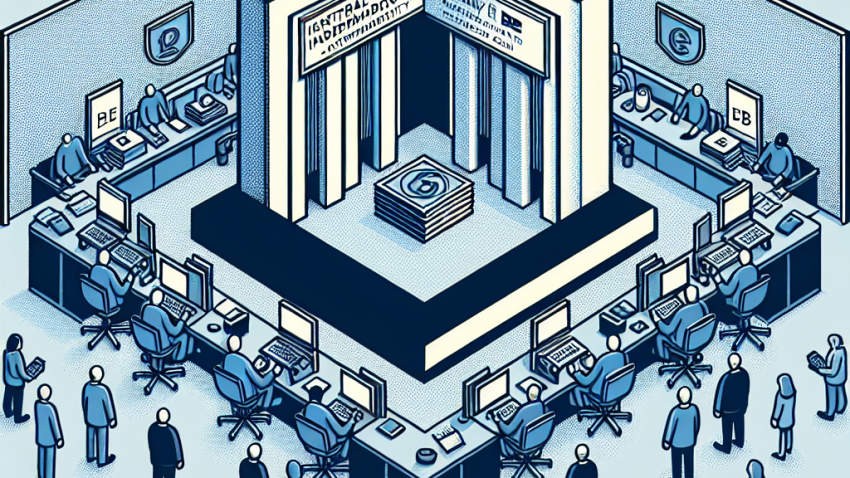
Central Bank Independence vs. Accountability: Redrawing the Line
Global Interest Rate Synchronization: Is the World’s Monetary Policy Marching in Step?
Ah, the orchestration of monetary policy — a symphony conducted by central bankers draped in seriousness and forecasts. But is this grand concert harmoniously in tune across the globe, or is each maestro merely improvising? As someone who has attended more central bank meetings than cocktail parties (tragically, both equally dry), allow me, Dr. Alistair P. Whitmore, to dissect the phenomenon of global interest rate synchronization with the precision of a Swiss watch and the flair of an Oxford dandy.
Understanding Interest Rate Synchronization
Interest rate synchronization refers to the tendency of central banks across multiple countries to raise or cut policy interest rates around the same time. It’s not a secret society, though it occasionally feels like one. Instead, it’s often an artifact of shared economic conditions — commodity booms, synchronized recessions, or inflation shocks that ripple across borders faster than a viral dance on social media.
The synchronization we’re witnessing post-2020 is remarkable both in its scope and speed. Following the pandemic-induced monetary easing, the inflation beast reared its ugly head — and suddenly, from Washington to Wellington, central banks embarked on a rate-hiking spree that would make even Paul Volcker blink twice. But is it coordination or correlation? Let’s probe deeper.
The Key Players in Monetary Harmony
The United States: The Federal Reserve’s Global Gravity
It is a truth universally acknowledged — okay, perhaps just among economists — that the U.S. Federal Reserve sets the tempo for global monetary policy. As the overseer of the world’s reserve currency, the Fed’s moves influence capital flows, emerging market debt, and even the price of your morning croissant.
When the Fed raises interest rates, capital tends to flow into U.S. assets seeking higher yields, putting pressure on emerging markets to follow suit or face currency depreciation. This contagion of policy is less about imitation and more about survival.
Europe and the ECB: Joined at the Hip?
The European Central Bank, though historically cautious about dancing to Washington’s rhythm, has found itself in step more often than not. Inflation across the Eurozone, driven by energy costs, supply chain issues, and hefty government spending, pushed the ECB to abandon its ultra-low rate policies faster than a Frenchman abandons New Year’s resolutions.
Coincidence? Rarely. With integrated financial markets, the ECB had little choice but to mirror, at least partially, the Fed’s tightening — lest the euro spiral into oblivion.
Emerging Markets: Imitation or Necessity?
For many emerging markets, synchronizing interest rates with developed economies isn’t a preference — it’s economic triage. As the Fed hikes rates, emerging currencies weaken, and imported inflation rises. Countries like Brazil, South Africa, and India have long learned that failing to preemptively raise rates can lead to capital flight and inflationary chaos.
Brazil’s Central Bank notably began tightening well ahead of the Fed, which suggests some emerging nations are not merely following — they’re forecasting. Call it monetary jiu-jitsu, if you will.
Why Synchronization Happens: The Global Transmission Mechanism
The world today is more connected than ever, financially speaking (though my Wi-Fi would argue otherwise). This interconnectivity creates channels through which policy decisions ripple across borders:
- Interest Rate Differentials: Disparities in rates drive capital flows, which affect exchange rates and sovereign bond markets.
- Global Inflation Patterns: Thanks to global supply chains, a shortage in semiconductors in Taiwan can raise prices on electronics in Toronto.
- Commodity Prices: Oil prices, driven by global demand, shape inflation outlooks from the U.S. Midwest to Sub-Saharan Africa.
- Financial Market Interdependence: Increased correlation among global stock and bond markets places pressure on synchronized responses from policymakers.
Risks of Synchronized Monetary Tightening
Ah, but here lies the rub — while synchronized easing in crises can feel like a warm blanket over a shivering economy, synchronized tightening can leave everyone cold and contracted. Some key risks include:
- Global Recession: Concurrent rate hikes, if not coordinated with fiscal alternatives, risk tipping several economies into recession simultaneously.
- Debt Distress: Countries with high USD-denominated debt suffer disproportionately when rates rise and their local currency weakens.
- Policy Inflexibility: Synchronization may expose economies to externally driven decisions that are not aligned with their domestic needs.
The IMF has already warned that simultaneous monetary contraction could lead to a broad-based deceleration. A synchronized sprint to beat inflation may leave global growth gasping for breath.
Is Coordination Real or Accidental?
Despite appearances, most central banks fiercely guard their independence — it’s their prized possession (right after their spreadsheets). Officially, there is no global interest rate cartel. Instead, what we observe is convergence due to:
- Globalized data models and forecasting tools used by central banks
- Shared access to economic intelligence through organizations like the BIS and IMF
- Peer influence: Let’s be honest, no central banker wants to be the outlier
The result is a world where monetary policies often rhyme, even if their verses differ.
What’s Next? Desynchronization on the Horizon
Like all good comedies and monetary cycles, synchronization eventually breaks down. Inflation pathways are beginning to diverge. While the U.S. sees disinflationary signs in housing and labor markets, Europe still grapples with energy shocks, and parts of Asia report relatively subdued consumer inflation altogether. Thus, in the coming quarters, we may see:
- Differentiated Rate Paths: The Fed may pause earlier, while others continue tightening.
- Currency Volatility: Diverging policies often stir FX markets, rewarding traders and punishing central bankers short on coffee.
- Macro Rebalancing: A return to localized policy decisions centered on domestic economic realities rather than global echo chambers.
Conclusion: Marching in Step, But Not in Lockstep
To paraphrase Tolstoy: all central banks are alike when easing rates, but each is unhappy in its own tightening. The current wave of global rate synchronization reflects shared inflation risks and integrated financial systems. But true policy allegiance remains domestic at heart. We may dance to the same monetary music now, but soon enough, each central bank will perform its own solo — with varying levels of grace and coordination.
Until then, mind the markets, align your investment strategies accordingly, and, as always, never forget that central bankers have a singular superpower: making things sound complicated just as they do them.
For more in-depth analysis on global finance and market trends, visit our About Us page or contact us directly.









Leave a Reply